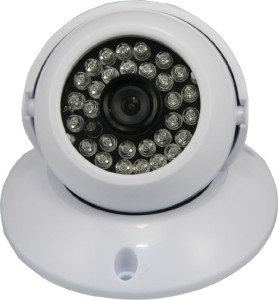When you are in the market to purchase a CCTV kit, it can be inundating because there are a multitude of options and features available. Camera choice is probably the most time intensive and tricky task to deal with, but with some basic knowledge, you will be able to make a decision on what features are vital and what to stay away from for your particular use.
Box and Bullet CCTV Cameras
The primary benefit of box and bullet cameras is the narrow angle of vision. An example of this is the need to monitor an area such as a main doorway entrance. The narrow landscape can be the ideal condition for a box or bullet camera. A narrow field of view will lead to greater detail and sharper video quality.
Different than the dome cameras, box and bullet cameras offer a more rectangular or cylindrical shape. The form between these two versions doesn’t affect performance, but is really a matter of aesthetic appeal.
Box cameras are mainly used inside buildings and for business applications such as banks. However, as a step toward the future, CCTV companies are beginning trends toward bullet cameras because of their more appealing design.
Dome CCTV Camera
a dome camera has a round exterior. The direction the camera is facing can be hidden because dome cameras often have tinted casing. Dome cameras normally have wide angle vision. Parking lots, front driveways and porches are examples of wide open areas that the dome camera’s field of vision is ideal for. However, video details will be of lower quality when the angle of view is wider.
Dome cameras do tend to be sturdier and offer features such as vandal resistant coverings, which is great for areas with high vandalism concerns. These defensive casings can protect the camera from trauma suffered by swinging bats and crowbars.
The Dome camera’s casing mounts straight to a surface instead of utilizing a little bracket, which is different than the box and bullet cameras. This could be considered a drawback since these cameras are normally made to be attached vertical on ceilings or outside on poles with bulky brackets.
camera styles offer more versatility with regards to mounting position since the attached bracket gives the owner liberty to easily change the camera’s direction by simply adjusting the camera mount. One key point to keep in mind is that this could also be considered a disadvantage if a potential intruder can get behind the camera and simply point it in another direction. These cameras have to be mounted high enough so they can’t be easily bothered.
Choosing your camera style 3 core camera types you can decide from: Dome, Box or Bullet.






